
Tax day was a whiteout in Idaho.

Actually, I'm glad for this. This is the first moisture that we've had in weeks, and we really need it. I won't be starting seeds for at least another 10 days.
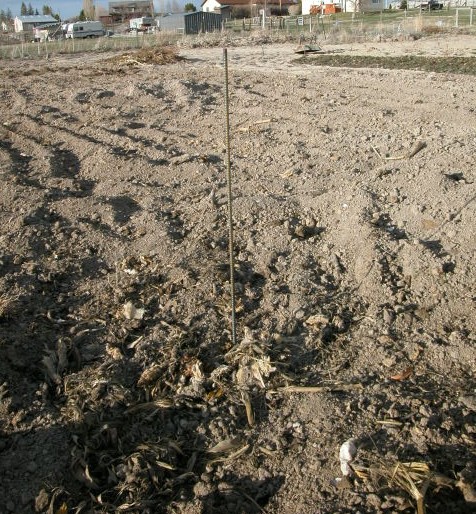
Here is the patch a few days ago. Over the winter, I did nothing.
Are you kidding? It was nearly impossible to do anything in the
patch between the day after Thanksgiving when winter hit and
mid-March, when the snow had finally melted and the ground
dryed up enough to walk on. But before winter I added several
pickup loads of well composted manure. I've also added amonium
sulfate, and plan to add more.
There are three spots where I have dug down into the subsurface
about 2.5 to 3 feet down, and refilled the holes with a mixture
of well composted manure, dirt, and other organic material. On
one of the spots, I tried to make a "hot bed" with fresh
manure about 2 feet down. I'm not sure if this will work. Maybe
the snow over that spot will melt a little faster than the
surrounding area?
I'm going to try to limit myself to three main plants this
year. I may grow a fourth, but that will be all.
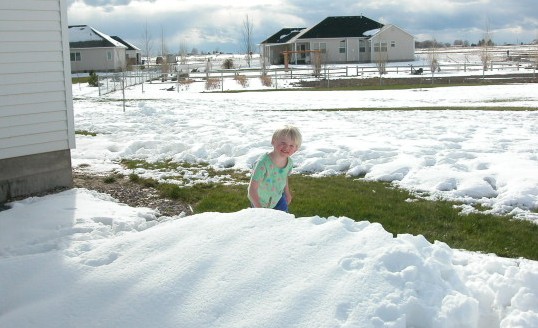
Later in the day I added 30 pounds of gypsum to the patch, which this year is about 2700 square feet.
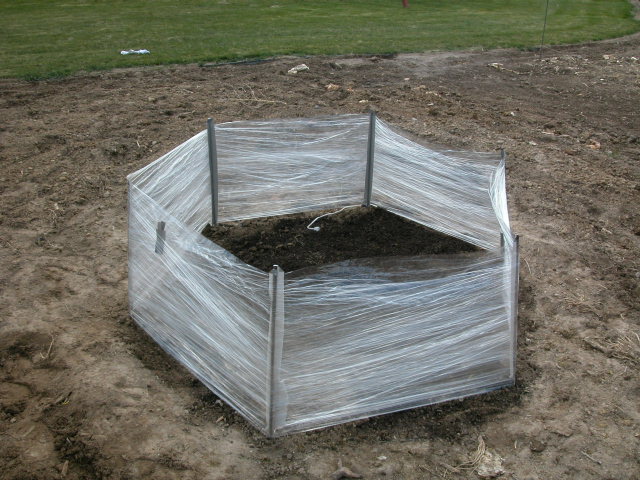
The plastic is wrapped tightly around the rebar, and a line of duct tape is used to help hold the plasic in place at each rebar node. I need to find some of those plastic caps to put on top of the rebar, to avoid tearing the tarp when I put that over the top. The tarp can then be staked down tightly at night, holding the heat from the heating cable.
One issue that we have in this area, is in the spring it can be in the 80's during the day, and low 40's at night. This system allows me (I hope) to drop the top in the day and let full sun in, keep the wind protection, and stay warm at night. I hope we're past the danger zone for freezing when the plant outgrows this hexagon. Once the plant outgrows this system, I'll use the rebar to construct a wind fence.
As you can see in the photo, I've compacted the soil outside the hexagon by walking on it too much while moist. I'll need to re-cultivate that, and also add a layer of soil around the outside to prevent air seepage underneath the plastic.
I will rebuild. In addition to the heavier plastic, I need to use 1/2 inch rebar, not 3/8. The 3/8 inch rebar actually flexes in the wind.
I'd like to say that this 60mph wind stuff is an odd occurance, that it doesn't happen every year, but I'd be fooling myself. We get several of these wind storms every spring.
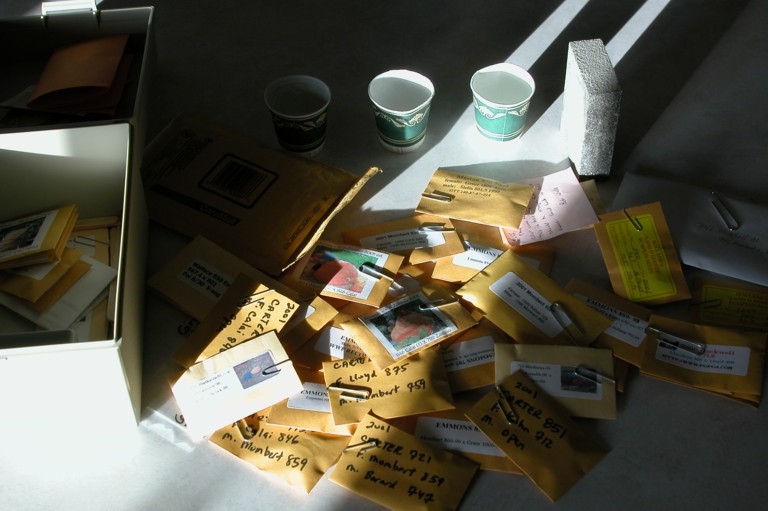
April 25 - Yesterday evening I started some seeds. Here is the lineup for 2002, may the most vigorous seeds win:
Here is a simple tip for making a nametag marker to go with your plant.
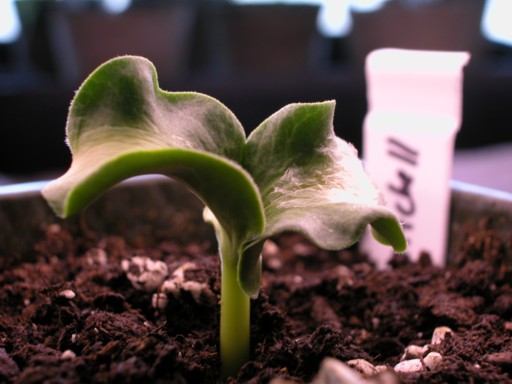 April 29 - WooHoo! Six of seven seeds are up!
April 29 - WooHoo! Six of seven seeds are up!On Saturday afternoon the 842 Mitchell (pictured) was the first to pop up, in just under 3 days. But on Sunday morning, I had 5 up and by afternoon all but one had sprung to life. As of Monday morning, only the 847.5 Christensen hadn't come to the party. It's still early. I really hope the 847.5 comes around. This pumpkin had the most beautiful color ever. No guarantees on what color it will throw, but I think a lot of people are interested in this seed this year.
But I can see why the 847.5 is a little slower. About half of each seed leaf fails to develop. This little plant may "grow out of it", but its facing stiff competition for a spot in the patch. If it survives, I'll make sure it gets planted somewhere.
This is just the "luck of the draw". Any other seed from the 847.5 would likely be fine.
My other seedlings look great! Under the grow lights they turn a rich, dark green.